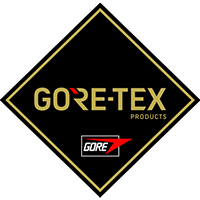EXPLORE THE HIGH-LEVEL PROTECTIVE BENEFITS OF THIS TECHNOLOGY APPLICATION
Protects against incidental flame and flash fire and forms a self-extinguishing char to protect the wearer. The material remains intact and does not break open.
Prevents penetration of liquid chemicals to EN ISO 6530, even after contamination.
Prevents penetration from viral and blood borne pathogens in accordance with ISO 16604, even after contamination and 50 washes.
Elasticity allows for better fit. The fabric expands and contracts easily, moving with the wearer like a high-performance sports garment and allowing room to vary layers underneath to suit weather conditions.
Extremely light fabric can stretch four ways to allow the freedom of movement to work effectively in challenging rescue environments.
Durable waterproof protection from rain and inclement weather for long rescue incidents.
Allows sweat to evaporate out from inside the garment and keeps the wearer cooler during high exertion work.
Absorbs less water with efficient run off that prevents moisture build up and keeps wearer dry throughout extended operations.
The fabric does not degrade after repeated washing and decontamination
Research shows that over 80% of callouts for fire and rescue services across Europe concern road traffic accidents, water or other technical rescue activities. These incidents are completely different from fire interventions.
Until now, protection for rescue work has always involved compromise – either working in more insulated and robust structural gear that over protects for technical rescue situations, or operating in lightweight suits that offer minimum protection and quickly become uncomfortable in cold, wet or very hot weather.
Firefighters need the confidence that their garments will protect them from all the risks that they face at a rescue incident.
The revolutionary GORE-TEX CROSSTECH® PYRAD® stretch fabric is a game changer for technical rescue, combining several of Gore’s proven world leading technologies in a bespoke rescue application.
- EN 343 Class 4 full weather garment protection
- ISO 16604 method C for blood borne pathogen protection
- ISO 13506 for flame protection
- EN ISO 20471 high visibility requirement for professional use
- EN ISO 15797 table 1 method 2, washing garments at 60°C using tumbler drying method A
- EN 16689 - Protective clothing for firefighters - Performance requirements for protective clothing for technical rescue
- EN ISO 11612 - Protective clothing - Clothing to protect against heat and flame - Minimum performance requirements
- EN ISO 14116 - Protective clothing - Protection against flame - Limited flame spread materials, material assemblies and clothing

FIELD TESTS AND USER FEEDBACK
When GORE-TEX CROSSTECH® PYRAD® stretch garments were taken to technical rescue teams around Europe the response was immediate and enthusiastic. As soon as they picked the garments up, firefighters commented on how light they were. They said that the gear felt more like sport or leisure wear and really appreciated the freedom of movement and comfort. Those that tried the clothing in the rain were surprised at how easily the water ran off the fabric and were dry throughout the day. Fire fighters present at fire testing were surprised by the fire resistant performance in such a lightweight garment. Many were reluctant to give the test samples back.
“When I move in the garment I don’t feel any restriction, it’s like moving in my undergarment.”
“It’s the best PPE I ever worn.”
“I can’t believe this is certified PPE.”
“The hot feeling, I usually have with my gear is not perceivable here. I sweat but I’m not feeling wet.”

SUSTAINABILITY
GORE-TEX CROSSTECH® PYRAD® stretch fabric has a longer lifespan as it made to withstand the operational rigours and frequent decontamination needed for technical rescue and can withstand over 50 industrial washes (using ISO 15797 table 1 method). This longer operational lifespan reduces the number of replacements required and extends the usage of the initial resources consumed during production and distribution, which has the largest impact on the environment. Also, by using this garment instead of structural fire gear for technical rescue callouts, the lifetime of those garments are also extended.











